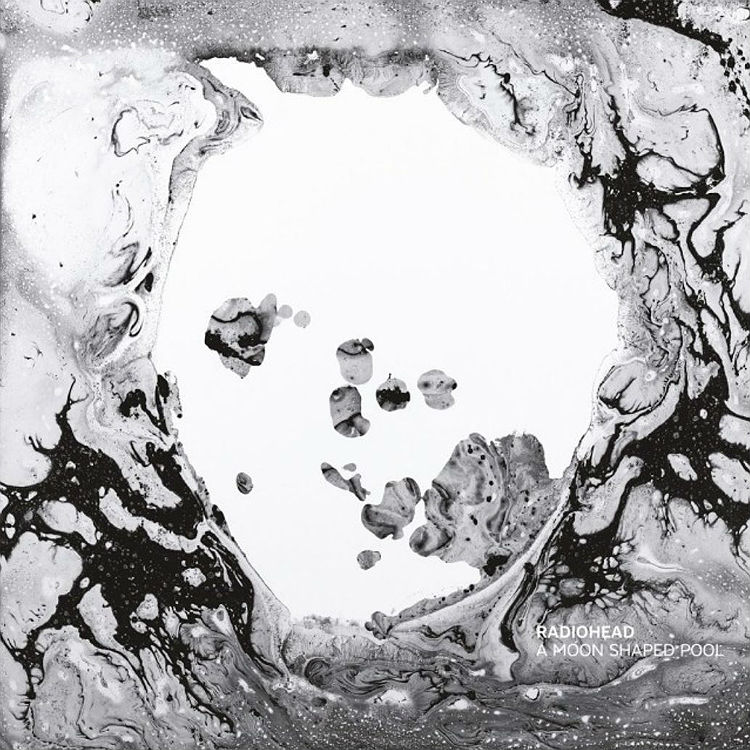A personal review of Radiohead’s A Moon Shaped Pool
In times of change and fear, listening to music can be a cathartic experience, as it offers an escape from reality. Music can also reflect the moods and events that occurred during its creation. Last year, Radiohead released A Moon Shaped Pool which, for me personally, was the most impactful album of 2016. I repeatedly go back to the album to lament and escape the events that are happening in the world today. The album not only relates to my own anxieties, but captures overall feelings of anxiety, apathy, hope and lost love through lyrics and instrumentation.
Radiohead continues to evolve and change their sound instead of rehashing their past albums such as OK Computer or Kid A. The band’s sound reflects their age and the ways they have evolved. The album opens with the track “Burn the Witch,” a legendary unrecorded song known amongst ardent Radiohead fans. The song consists of violent violin plucking, a drum machine and a bass guitar, which together create a hectic, yet structured sound. Lead singer Thom Yorke sings “This is a low flying panic attack,” evoking anxiety about a metaphorical witch-hunt. “Burn the Witch,” both the song and music video, make an allusion to the 1973 version of the movie, The Wicker Man. It tells the story of a detective going to investigate a disappearance on an island where they have sacrificial rituals. These rituals make reference to the “burn the witch” chorus, which refers to a “witch-hunt.” The song conveys an unwilling coercion, with its main hooks, “Burn the witch, we know where you live” and “Abandon all reason.” The song’s lyrics and sound, touches on the idea of political movements dividing people into “common people” and “metropolitan elite.”
The emotionally impactful track “Glass Eyes” is beautifully orchestrated, with gentle piano playing. The lyrics paint an image of a depressing grey world, where Yorke sings in a subtly depressing tone: “Hey it’s me I just got off the train, a frightening place, the faces are concrete grey and I’m wondering, should I turn ‘round? Buy another ticket? Panic is coming on strong.” In the song, Yorke sings about wandering off down a mountain path, not caring where he goes, just as long as he escapes this panic attack. I relate to these lyrics personally, as moving to Montreal for university was hard because of all the social anxiety I experienced. Last year, my anxiety flared up—walking down the street brought on a sense of panic, my heart rate would rise and I had to lower my gaze to avoid eye contact. Sometimes, I needed to be alone, to forget about the panic that was brought on by large public spaces. The song captured my anxiety, to the point where I cried on my bed the very first time I heard it. “Glass Eyes” is one of the only songs that has ever made me cry. This track uses a combination of an orchestra and Yorke’s somber, aged voice to illustrate a beautifully depressing image of a panic attack.
In the song “Present Tense,” Yorke describes a scene of a world crumbling around him, as he sings about dancing and clinging on to the things he knows and loves. “Present Tense” has sounds influenced by Latin music, and the song is constantly changing. A choir comes in halfway through the song as the drums kick in, and the vocal melody is constantly evolving, delivering an emotional punch and meditative state of reflection.
As Yorke sings “As my world comes crashing down, I’m dancing, freaking out, deaf, dumb and blind,” I feel he uses dancing as a way to save himself from distress. I love the image of dancing while the world is ending, not having the ability to do anything, content with the fact that the world is coming to an end. The song ends with the loving line, “In you, I’m lost.” “Present Tense” gives a hopeful message of love and catharsis. It reminds me of when I saw Radiohead at Osheaga this past summer. I’ll never forget the sense of community at Osheaga—camping out to see Radiohead for 12 hours at the main stage, dehydrated, with my legs feeling numb. The most memorable moment was when the whole crowd started singing “Phew, for a minute there, I lost myself,” the outro to “Karma Police.” Thom Yorke even extended the song, playing guitar while the crowd continued singing. “True Love Waits” is another mythical, unrecorded song on the album which dates back to the The Bends era (circa 1995).
The song on bootlegs — the unofficial recording that got released, (which only had Yorke playing acoustic guitar) was a hopeful, youthful song about unrequited love. However, more than 20 years later, the song is transformed with a minimalist sound. Yorke’s voice sounds strained and evokes a sense of sadness, accompanied with simple-sounding piano sounds. The sappy lines, like “and true love lives on lollipops and crisps,” seem more like desperate attempts to cling to an innocent time.
Now, Radiohead has transformed an old song’s seemingly outdated and naive lyrics into a truly depressing song. “True Love Waits” is an emotional gut punch, with lines like “I’m not living, I’m just killing time,” and the somber closing line: “Just don’t leave, don’t leave.” This song encapsulates how I feel about the year 2016. It was a shit year for many of us, but I’m glad we have music that reflected the essence of that year in a supporting way.
Radiohead and many other artists came out with albums in 2016 that were fun, exciting and relevant to today—they didn’t ignore the problems we are facing, didn’t just wish for everything to be okay. Instead, they faced them by making incredible music. Radiohead’s A Moon Shaped Pool is not a political album—it never mentions specifics—yet manages to capture the emotions we continue to face, with wicked instrumentation and abstract lyrics.
